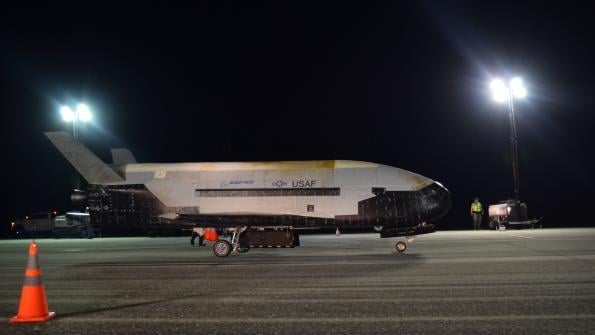X-37B Program: Through The Years

More than 20 years after initial development, the X-37B is beginning to serve its original goal – reducing the cost of space missions, as the Orbital Test Vehicle was launched for a sixth mission.
Development of the OTV started in the late 1990s as a NASA/Boeing Future-X Pathfinder effort aimed at reducing the cost of launch.
But the technology demonstrator did not meet NASA’s goals and in 2004, the space agency transferred control of the program to Darpa, which planned two captive-carry and three gliding drops of the 27.5-ft.-long, 7,000 lb. approach and landing test vehicle.
Control of the program was later transferred to the Air Force’s Rapid Capabilities Office, where it underwent testing. The service planned to use the X-37B unmanned winged OTV as a reusable vehicle with a payload bay from which it could deploy small spacecraft and recover small payloads tested in space.
The first X-37B Orbital Transfer Vehicle was launched in April 2010, by a United Launch Alliance Atlas V booster and landed 224 days and 9 hr. later. It was the first autonomous orbital runway landing in the U.S. and the first flight for the Atlas V.
Most of the details of the X-37B program are classified, though the Air Force says the program helps to demonstrate technologies on a reusable, uncrewed test platform for the military. The first five missions of the OTV, which weighs 11,000 lb. and is powered by gallium arsenide solar cells with lithium-ionbatteries, have spent a total of 2,865 days on orbit.